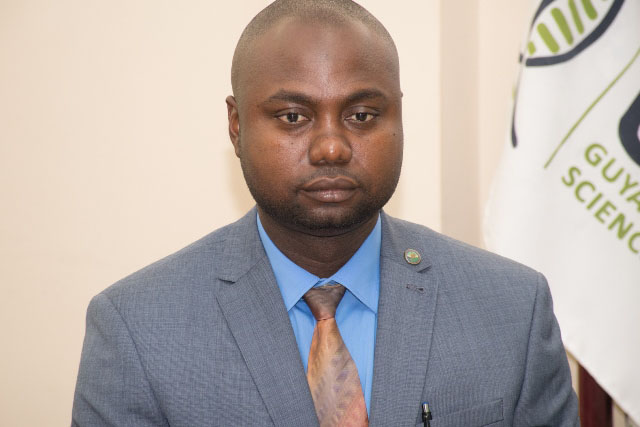The government is examining the acquisition of state-of-the-art equipment for the Guyana Forensic Science Laboratory (GFSL) to address the current challenges facing the police in having to manually match recovered firearms and ammunition to crime scenes.
“I can tell you that there is a large number of weapons… [and] ammunition that they [the police] have to look at and to manually sit down and look at two cartridges and then map it to a crime…is going to take a lot of time,” GFSL Director Delon France said before emphasising that one has to manually look at each. “One or two persons can’t look at 1,500 shells and then say these five match the scene. It takes time,” he told the media last Wednesday shortly after the commissioning of two key pieces of equipment for the laboratory.
France explained that the lab has been working in close collaboration with the Guyana Police Force regarding firearm and ammunition matching and ranks as well as laboratory staff have benefitted from training. He noted that officers are currently looking at weapons which were recovered and are trying to see if they were indeed part of crimes.
Though stressing that “it’s a work in progress,” he was unable to divulge how many of the weapons tested thus far were linked to crimes. He said that information is with the police. According to France, there have been discussions about the procurement of equipment to assist in the matching process. He indicated that the equipment is very costly. “This is something that is being discussed and we’re looking to try and see if we can get a more affordable one that you can actually upload images into the instrument and the instrument does the quicker matching because it is the computer that can narrow the search and once that is narrowed down we have to manually go and look at them,” he explained.
Public Security Minister Khemraj Ramjattan made a commitment to ensuring that the laboratory gets the much needed equipment. “We have space for another piece of equipment but that will be another three to four hundred thousand US dollars. We are going to get there. I intend to ensure that we get there,” he told the media at the commissioning, while stressing the very tedious process that has to be currently used.
He said that while lots of more hands are required to get the job done, “these hands got to be with an expertise because they have to know the differences and or the similarities and all that. So if you had 1,500 crimes committed last year with guns… there needs sometimes to be other evidence than the searching… It is good that we have the lab… that [the equipment] will narrow it…and match it like a fingerprint expert and we only have two or three guys like that,” he added.
France indicated that during the manual process, the firearms and ammunition are grouped by type. “So one can look at a shell and know it came from the revolver. So the ranks are able to group the weapons by type,” he said.






